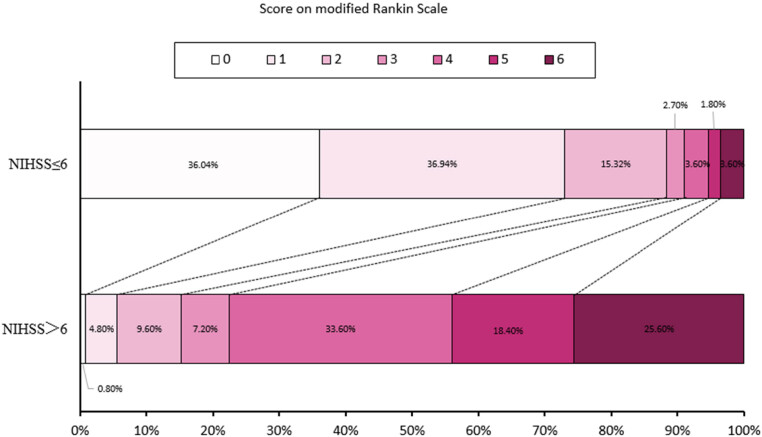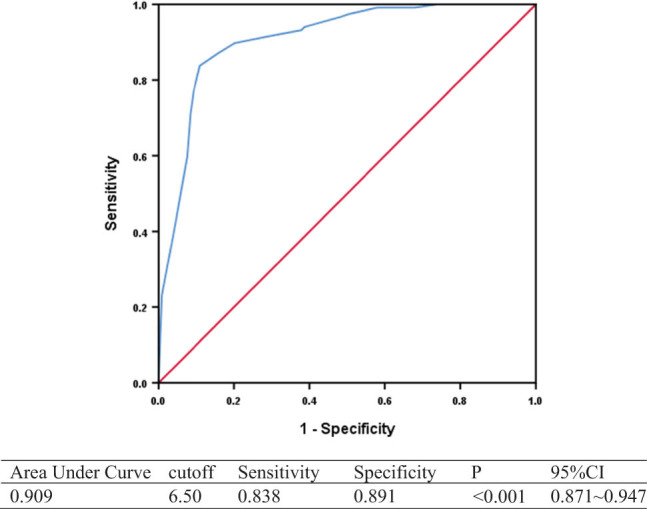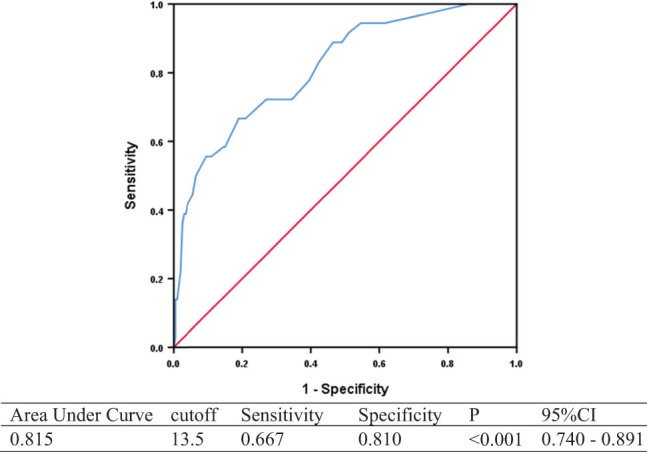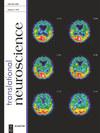7-Day National Institutes of Health Stroke Scale as a surrogate marker predicting ischemic stroke patients' outcome following endovascular therapy.
IF 2.2
4区 医学
Q4 NEUROSCIENCES
Translational Neuroscience
Pub Date : 2023-10-19
eCollection Date: 2023-01-01
DOI:10.1515/tnsci-2022-0307
引用次数: 0
Abstract
Abstract Background Early neurological deterioration after endovascular thrombectomy (EVT) is associated with poor prognosis. National Institutes of Health Stroke Scale (NIHSS) score measured at 24 h after EVT may be a better outcome predictor than other methods that focus on changes in NIHSS. Nevertheless, clinical fluctuations in ischemic stroke patients during the immediate phase after symptoms onset are well recognized. Therefore, a delayed NIHSS evaluation may improve prognostic accuracy. We evaluate the 7-day NIHSS in predicting long-term patient outcomes after EVT. Methods This was a multi-center retrospective cohort study of 300 consecutive ischemic stroke patients with large vessel occlusion who underwent EVT at three-stroke centers in China from August 2018 to March 2022. NIHSS was recorded on admission, pre-EVT, 24 h, and 7 days after EVT. Results A total of 236 eligible patients were subdivided into two groups: 7-day NIHSS ≤6 and NIHSS >6 post-EVT. 88.29% achieved a favorable outcome (modified Rankin Scale 0–2) in the NIHSS ≤6 group compared to 15.20% in the NIHSS >6 group at 90 days, and an improved favorable outcome in the former group was observed after adjusting for potential confounding factors (adjusted odds ratio 39.7, 95% confidence interval, 17.5–89.7, p < 0.001). Conclusion The 7-day NIHSS score may be a reliable predictor of 90-day stroke patient outcome after EVT.



美国国立卫生研究院7天卒中量表作为预测缺血性卒中患者血管内治疗后结果的替代标志。
背景:血管内血栓切除术(EVT)后早期神经系统恶化与预后不良有关。美国国立卫生研究院卒中量表(NIHSS)评分为24分 EVT后h可能是比其他关注NIHSS变化的方法更好的结果预测指标。然而,缺血性中风患者在症状出现后的即时阶段的临床波动是公认的。因此,延迟NIHSS评估可以提高预后的准确性。我们评估了7天NIHSS在预测EVT后长期患者预后方面的作用。方法:这是一项多中心回顾性队列研究,对2018年8月至2022年3月在中国三个卒中中心接受EVT的300名连续大血管闭塞缺血性卒中患者进行了研究。入院时记录NIHSS,EVT前,24 h、 和7 结果:共有236名符合条件的患者分为两组:EVT后7天NIHSS≤6和NIHSS>6。在NIHSS≤6组中88.29%的患者在90天时获得了良好的结果(改良Rankin量表0-2),而在NIHSS>6组中为15.20%,在校正了潜在的混杂因素后,前一组观察到了改善的良好结果(校正后的比值比39.7,95%置信区间,17.5-89.7,p<0.001)。结论:7天NIHSS评分可能是EVT后90天卒中患者结果的可靠预测指标。
本文章由计算机程序翻译,如有差异,请以英文原文为准。
求助全文
约1分钟内获得全文
求助全文
来源期刊

Translational Neuroscience
NEUROSCIENCES-
CiteScore
3.00
自引率
4.80%
发文量
45
审稿时长
>12 weeks
期刊介绍:
Translational Neuroscience provides a closer interaction between basic and clinical neuroscientists to expand understanding of brain structure, function and disease, and translate this knowledge into clinical applications and novel therapies of nervous system disorders.
 求助内容:
求助内容: 应助结果提醒方式:
应助结果提醒方式:


